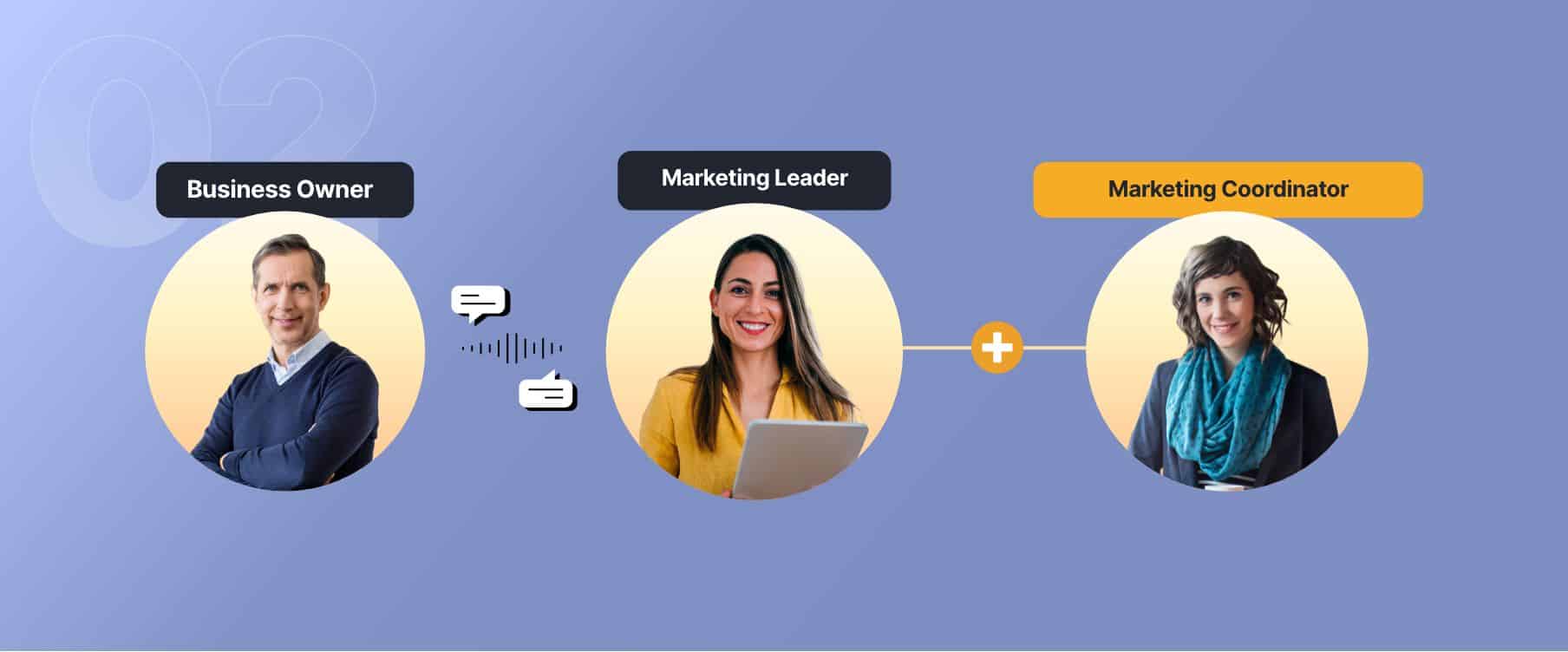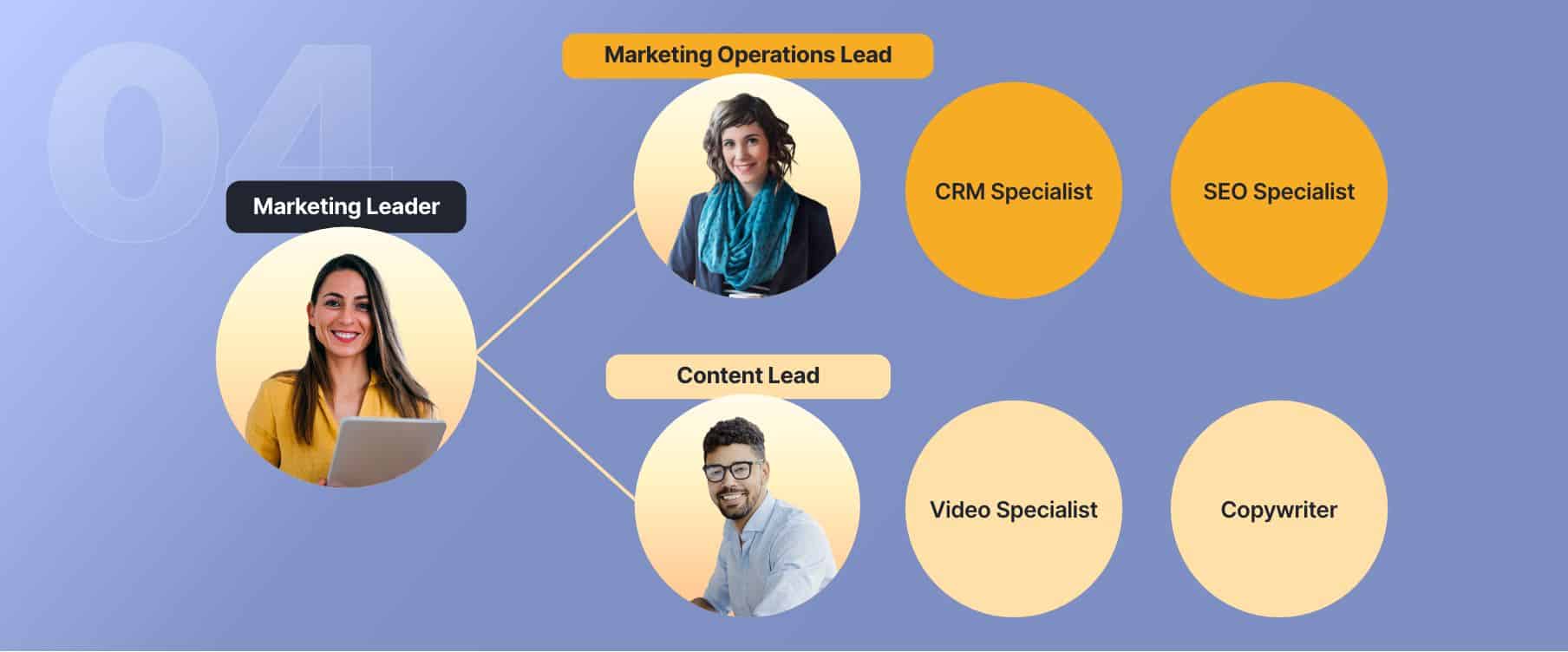
Introduction
This article will look at how small to medium-sized businesses can develop their own in-house marketing teams. While some firms may balk at the idea of hiring full time employees for marketing, the vast majority who make this investment realize it pays for itself many times over. It’s well established now that the most effective marketing is inbound: engaging with specific customers and drawing them to your business by offering the information and services that they are looking for, rather than trying to reach everyone by interrupting them with advertising. Inbound marketing is where in-house teams excel.
The fact is, we all live in a highly distracting world and we’ve all become skeptical of interruptive advertising. Most of us now only do business with those whom we trust. This means you have to establish your company’s credibility and gain the trust of the people you want to be your customers. And to get that message out, you need to do more than just make noise.
Inbound marketing relies on creating useful, targeted information for specific groups of customers, and that requires strategy, research, and customized content creation. Technologies are at every step, and success depends on a combination of analytical thinking and creativity. This means specializations and specialists, and while the temptation will be to outsource these roles, the fact is, outsiders will never be able to really understand your company as deeply as they need to to create truly effective strategy. You need people in-house who know your culture and your customers.
The good news is it’s never been easier for small businesses to achieve real results with inbound marketing. The first step, as we will see, is hiring a marketing leader. They will research your competitive environment and develop short- and long-term strategies for success. Once this person is up to speed, you’ll know who you need to reach and how. They’ll help you build your small foundational marketing team who will launch campaigns that engage with your target audience and draw them into your sales funnel.
Building your own marketing team means reducing your reliance on freelancers and agencies and investing in full time internal hires. It also means ending your reliance on luck, because at the core of any successful marketing campaign is researched and customized strategy. When done right, your marketing team will become a profit center, paying for itself and driving the growth of your business. This article will show you how to do it right.
Early days: “The pre-marketing team”

Most companies don’t start out with large in-house marketing teams already established. Often, existing leadership takes on the role until the demands exceed their capabilities. When that point is reached, they typically hire consultants or create a dedicated marketing role with the expectation that the person will handle everything. This can be considered the “pre-marketing team” stage, and while most companies go through it, the successful ones grow out of it. Getting stuck in this stage means wasting a lot of time and money.
Below are the most common types of roles that result in these early days, when non-dedicated staff handle marketing alongside their other duties, or a single person is tasked with all things marketing. While these may seem like the best or only solutions at the time, they, in fact, cause you to neglect your marketing and hinder your from reaching your full potential. You can think of this as the period before a marketing team is turned into a profit center.
The Founder-Marketer
The CEO or founder has a good eye for marketing, so they take on marketing tasks in addition to their core responsibilities. This can actually be a huge advantage, given the importance of marketing for the company’s growth. The challenge comes when marketing tasks start to overwhelm other responsibilities.
The Accidental Marketer
In some cases, marketing responsibilities fall on someone in the company who has an interest in marketing, or perhaps is just too polite to turn down the new tasks they’ve been assigned. And while marketing assignments may get completed, this individual is unlikely to have the experience or capacity to develop an effective marketing strategy, so the results are often limited.
The Marketing Admin
More challenging still is the marketing admin, who may also be the receptionist or office administrator tasked with handling a contracted marketing agency. As well intentioned as a marketing admin may be, they likely lack the leadership skills to guide agencies and freelancers or keep them accountable.
The Marketing Consultant
Consultants are sometimes brought in to provide marketing guidance. They may offer a lot of useful ideas and recommendations. However, without a clearly defined ownership role to implement and oversee the recommendations, the engagement may be short lived and deliver only superficial improvements rather than a reproducible system.
The All-in-One Marketer
This will be the first dedicated internal marketing hire, and they are typically tasked with all things marketing. Expectations are often unrealistic, and they could be expected to handle everything from managing social media to blogs to ads to SEO. They’re usually inexperienced, because experienced marketers learn to avoid this type of overstretched position.
If you’ve had people in any of these roles and got results that were less than what you were hoping for, you’re not alone. It’s a phase that many companies go through. At some point, successful companies realize that keeping marketing on the sidelines or leaving results to chance won’t achieve positive outcomes. At this point, it’s time to create your own marketing team.
Let’s find out how.
The 5 Stages of Building an In-House Marketing Team
Stage 1: Hire a marketing leader

Overview
The first step in developing an effective marketing team is to hire someone to lead and own your marketing strategy and outcomes. This is not the inexperienced all-in-one marketer trying to meet unrealistic expectations that we discussed above. This is an expert, with a track record of delivering positive results for growing businesses. Their role can be full time or a fractional/part-time arrangement. But, critically, this person must be able to integrate into your company in order to lay the groundwork to set you up for success. This means having access to your current and past marketing materials, and, more importantly, access to everyone in the organization. This way, they can gain a complete understanding of your company’s strengths and weaknesses. And conversely, they can help make sound marketing approaches part of your company culture.
Job Description
- Titles: Head of Marketing, Marketing Director, CMO, Fractional CMO
- Attributes: Broad marketing knowledge; strategic leadership history; business acumen; good listener; ability to manage and lead; 10+ years of experience
Objectives
In this stage, your marketing leader should learn as much as they can about your company, your ideal customers, and your past marketing efforts. Even if they are already experienced in your industry, it will take some time for them to identify your differentiation in the marketplace. Their focus should be on absorbing as much information as possible, as quickly as possible, and identifying the first roles they’ll need to fill to build your team.
Stage Duration
1-2 months
Points to Note
- Your marketing leader must not become the all-in-one marketer who is immediately tasked with a long list of responsibilities, meetings, and administrative duties. They are a leader, so their main goal is to begin building a team — your team. Assigning them too many tasks will set them up for failure and prevent you from progressing to the next stage.
- There will be no lack of applicants for this type of position. Beware of inexperienced people who make big promises. You need to weed out the all-in-one marketers who are more administrative and used to being delegated to, and the narrow specialists who are trying to branch out into leadership roles. These individuals are unlikely to have the skills required to formulate strategy or build and lead your team.
Stage 2: Build the marketing foundation

Overview
Once your marketing leader has a good understanding of your business, they’ll be able to hire the first operational member of your team: your analytical/technical marketer. If you already have someone in a marketing role, they will probably fit nicely into this position. They’ll also appreciate having an experienced marketing leader to guide and coach them.
Job Description
- Titles: Marketing Coordinator, Marketing Technician
- Attributes: Analytical and technical; skilled at research, project management, campaign monitoring, vendor management, and SEO performance; flexible and willing to learn; able to collaborate with internal and external stakeholders
Objectives
Once this position is filled, the first activity will be to build and launch a quarterly marketing campaign to begin gathering data. The team will likely start with some low-hanging fruit and achieve some quick wins. More importantly, they’ll use the data gathered from these results to optimize future quarterly campaigns for the highest ROI.
Stage Duration
3-12 months
Points to Note
- Your marketing leader will help the marketing coordinator to establish the internal marketing processes, an area where most firms struggle. This includes setting up the CRM, lead tagging, email software, webinar software, etc. These are things an outsider cannot do.
- For content creation, your marketing coordinator will task an agency or freelancers with writing and design. However, as this inbound process begins to prove itself, it will be important to begin creating content in-house, which is the focus of the next stage.
Stage 3: Create an inbound marketing system

Overview
Once the marketing systems are in place, the marketing leader will hire the next foundational member of your team: your creative/content producer. Together, you should think of these three people as your “minimum viable marketing team” capable of creating quality content and promoting that content to the right people at the right time.
Job Description
- Titles: Content Manager, Marketing and Communications Manager, Managing Editor
- Attributes: Creative and open-minded; skilled writer and editor; skilled at interviewing colleagues and customers to gather insights, and then putting everything together into a blog post, video script, email, web copy, etc.; able to collaborate with internal and external stakeholders
Objectives
With a content manager in place, it will become much easier to create and publish quality content consistently. Your marketing leader will task the content manager with outreach initiatives to internal team members and happy clients. These interviews will result in quality educational material, case studies, and video scripts. Your marketing coordinator will then be able to leverage the valuable and relevant content and get it in front of the right audience.
Points to Note
- Your marketing leader will leverage this three-person foundational team for as long as possible, making sure not to add roles until it’s absolutely necessary. The following stage will involve the expansion of your marketing team with specialized roles. For now, though, you’ll be using vendors and agencies to fill the gaps for any specializations that don’t yet exist internally.
- You may be tempted to save money by not hiring a content manager and instead tasking the marketing coordinator with writing responsibilities. However, this is a compromise you should avoid if at all possible. Under-resourcing the foundation of a marketing team often results in money being wasted as opposed to being saved. This is due to the two main reasons below.
First, it’s difficult (if not impossible) to find a quality content creator with creative thinking who is also organized and analytical. This person would need to be skilled at manipulating language and crafting messaging as well as reading dashboard analytics and researching the latest SEO trends — think right brain vs. left brain. And if this unicorn is found, and they end up being successful, their workload will quickly become unsustainable as their responsibilities grow. This means hiring the second position anyway, and starting the team-building dynamics from scratch.
Second, speaking of interpersonal dynamics, having two positions under the marketing leader is advantageous for team chemistry and competition. These two colleagues will start working together under the guidance and direction of your marketing leader, and they’ll inspire each other with ideas and push each other to grow. With a single leader and a single all-in-one subordinate, the dynamics are far trickier.
Stage 4: Grow and specialize the team

Stage Description
As your campaigns roll out, the results will be studied and fed back into a cycle of optimization by your marketing team. Campaigns that deliver results will need to be scaled. This means an increased volume and frequency of content creation, more events, and likely more marketing channels to manage. To accomplish these new growth objectives, your marketing coordinator and content manager can transition from solo producers to hybrid producer-managers overseen by your marketing leader. This means hiring functional specialists like copywriters, SEO experts, videographers, or social media experts. Not all of these need to be hired at once; your team should grow organically to maintain profitability.
Job Descriptions
- Title: CRM Specialist
Attributes: Data management, reporting, lead tagging, email campaign management. They should free up the time of the marketing coordinator so the latter can focus more on revenue-generating tasks. - Title: SEO Specialist
Attributes: SEO is so important that it can be worth hiring a full-time expert. They will continuously optimize your existing online content and propose new content based on trends in what people are searching for. They can also conduct outreach to other businesses in order to obtain valuable backlinks. - Title: Video Specialist, Videographer
Attributes: This role has gone from a “nice to have” to an essential. They engage your customers by creating videos of your office, the team, explainer videos, help center videos, case studies, etc. - Title: Copywriter, Editor
Attributes: With the content manager now overseeing all of the content production, this writer will ensure that content is still written at the required frequency.
Points to Note
- At this stage, the two foundational specialists become team leaders: the marketing coordinator becomes the marketing operations lead and the content manager becomes the content lead. They no longer have to split their time across a wide range of tasks. They still report to your marketing leader, but they are now able to delegate and act as an additional layer of oversight to make sure everything is performing at an optimal level.
- This is the stage where the marketing flywheel begins to turn. You have a relatively small team of just five to seven people, but there’s enough specialization that everyone knows their responsibilities and can really hone their craft. Some companies may remain at this stage, and that’s completely fine.
Stage 5: Become self-sufficient

Stage Description
While many companies may stop at Stage 4, success begets success. If your team is excelling and your company is growing beyond expectations, the natural next step is to bring all marketing in house. Up to this point, some gaps were still being filled by agencies or freelancers, both of which have their limitations. With a fully in-house marketing team, you can scale your marketing further, increase quality/brand consistency, and reduce total expenses. The following roles are increasingly specialized.
Job Descriptions
- Title: Advertising Specialist
Attributes: Skilled in creating ads and campaigns that convert; expertise with platforms like Google, Facebook, and LinkedIn - Title: Web Developer
Attributes: With new content being produced regularly and your website always changing, it’s time to bring in a web developer so you no longer have to be dependent on vendors or freelancers. - Title: Graphic Designer
Attributes: Designing web pages, eBooks, infographics, display ads, presentation slides, business cards, etc. - Title: Junior Copywriter
Attributes: A new writer joins the content team. They are mentored by the existing senior writer, and their work is still overseen by the content manager.
Points to Note
- As your marketing team scales with your growth, it becomes more agile and less expensive relative to the revenue generated. The expansion of each functional team in house means more accountability — you can expect and demand these people own their outcomes. Externally, your company enjoys more consistent branding and, internally, better connected systems.
- This stage is the ultimate goal of building a marketing team: they’re operating efficiently and independently, and you’re receiving high-level reports and making executive decisions when required. Stress levels are low because you have confidence that your marketing is working well. The market still changes and you still have competition, but you have the right people in the right positions to keep you competitive and successful. In the end, you have more time to focus on the things you care about.
Summary

By following this process, marketing will become entrenched in your company culture and operating procedures. You’ll have agility baked into the team structure, enabling you to adapt as needed, filling or removing positions based on demand. Best of all, marketing will no longer be a cost on your balance sheet. Instead, it will become a profit center that fuels your business, and pays for itself many times over.
Let’s review the stages of the process:
- Stage 1: Hire a marketing leader
A full-time or fractional/part-time expert who reviews the state of your marketing, plans your strategy, and prepares to hire your first two marketing specialists
- Stage 2: Build the marketing foundation
Develop internal systems and operating procedures that allow for data gathering, analysis, and continuous optimization.
- Stage 3: Create an inbound marketing system
Hire a content manager who creates valuable content that answers the questions your prospective clients are asking.
- Stage 4: Grow and specialize the team
Scale your marketing team with functional specialists like copywriters, SEO experts, videographers, and social media experts.
- Stage 5: Become self-sufficient
Begin eliminating all reliance on external vendors by expanding your marketing team into a completely in-house operation.
Even if you aim to reach only stage 3 or 4, you’ll still establish an effective and flexible marketing team built on a strong foundation and able to adapt to changing market conditions. By bringing just a few key marketing roles in-house, you’ll have control of your marketing success, setting yourself well above your competition.
Common Pitfalls

But life can’t be that easy, right? The truth is you won’t make it to Stage 5 without tripping a few times along the way. Everyone does.
Here are the five most common mistakes:
- Taking on too much yourself – Trying to handle everything — because no one can achieve the quality you demand — is one of the most common pitfalls of business owners and leaders. Lacking the ability to prioritize the important tasks, and the will to delegate the rest, inevitably leads to stretching yourself too thin. It’s undoubtedly true that no one knows your business as well as you do, but at some point, all successful organizations need collaborative leadership. You should never need to choose between your CEO responsibilities and marketing responsibilities, as both are critical for the success of your business.
- Not hiring a leader early enough – Hoping that someone will just “step up” and become the leader that you want them to be is another common delusion. It’s essentially leaving success to chance. Maybe you feel your marketing knowledge is enough to achieve some short-term success, but think about the consequences of that success: If you grow, are you able to keep increasing the time you commit to marketing? (See previous point.) And if you start hiring marketing specialists, are you able to grow a team yourself, too?
- Looking for “the one” solution – There are a lot of agencies out there claiming unicorn capabilities, offering turnkey or set-and-forget services, and promising big results. The hard truth is that there is only one reliable system for capturing market share and growing a business: start with strategy, focus on quality, and play the long game. For every overnight success you hear about, there will be countless failures — companies that wish they’d invested in their own marketing team before they wasted time and money trying to find a shortcut to success. That said, before you’ve built your own team, a marketing vendor may be your only option. Just don’t fall into the trap of hoping the next agency is better than the last.
- Growing your team too quickly – You probably noticed a theme in the five stages above: the positions in your marketing team should pay for themselves. This is the ideal process for building a marketing team: scale as needed. Some companies hire too many positions too quickly, hoping the new hires will pay for themselves through future growth revenues. This kind of getting-ahead-of-yourself is precisely the type of decision-making your marketing leader will help you avoid. If you start by bringing this expert on board, they will show you exactly how many people you need to achieve success without over-investing.
- Not hiring specialists soon enough – On the surface, a lot of marketing looks easy. Maybe that’s why so many companies spend a period with “Jack of all trades, master of none” marketing hobbyists who are simply employees in other roles, trying their hand at outreach just because they think they can. The truth is there is more than an art to successful marketing. Not only is persuasive content creation a difficult and rare ability, the technology that is now required for successful market research is constantly evolving and ever-more complex. In the end, avoiding hiring a specialist will simply lower your chances of success and stretch your team members too far.
The journey may feel challenging, but at least you can take comfort knowing you’re not the first and you’re not alone. Every business owner has been in your position. They’ve had to overcome each step of this journey. Many have failed, at least once. Not everyone overcomes the challenge going down the same exact path, but every successful business you know has made it over these hurdles. It’s absolutely possible. Not only that, it’s 100% necessary.
The question is, do you know how to overcome these challenges on your own?
Taking the first step
An alternative path: Start with a fractional CMO
You don’t always need a full-time leader.
A fractional CMO is a marketing leader who manages two to three marketing teams simultaneously, working part time for each of their clients. This allows businesses to hire an experienced individual at a fraction of the cost and risk of a full-time hire.
Fractional CMOs have become popular over the last several years, largely because, with increased competition and the increased sophistication of marketing technologies, small businesses have a harder time standing out. A better researched, more tailored marketing approach is required, which is rarely possible when outsourcing to a marketing agency.
Advantages of fractional CMOs
- Broad experience – Working with multiple companies allows fractional CMOs to develop a rich and varied understanding of the market, consumer behavior, and marketing technologies.
- Lower cost – Fractional CMOs are less expensive than a full-time hire’s salary and benefits package.
- Less risky – Their tenure depends on successful outcomes, and if things are not working out, you have no severance obligations.
Limitations of a fractional CMOs
- Not available full time
- More expensive than junior hires
- Not fully embedded in company culture
Let’s talk

As a fractional CMO, I’ve had the opportunity to work with a lot of great businesses, helping each of them build an effective marketing strategy and team.
Every business is unique, and that’s why it’s so important to meet you where you are on your journey, rather than trying to provide you with an off-the-shelf solution.
Let’s have a chat, discuss where you are, and see if I can help.